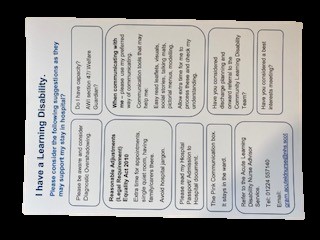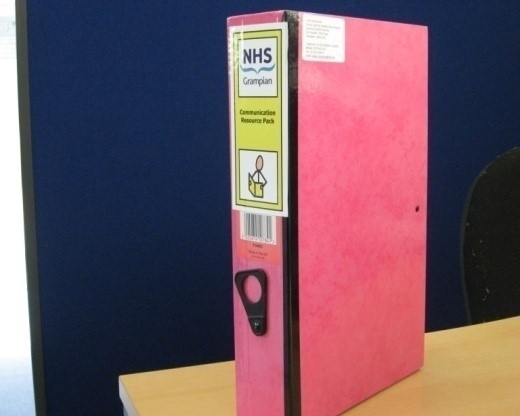Learning Disability Blog Article
Published: 10/05/2022 15:55
‘Take your time. People with a learning disability may need a bit longer than other patients to be able to understand information they are given and to make themselves understood. Just ten extra minutes can make a big difference to many people’. (People with lived experience, Mencap)
There is well documented evidence that people with learning disabilities experience health inequalities with long term co-morbidity prevalence greater than the general population (Doherty et al.2020), and are more likely to have a shorter life span than those who do not have a learning disability (Scottish Government 2019). The health status of people with learning disabilities are also more likely to be affected to a greater degree by infection or disease, with respiratory disease/infection the leading cause of death for people with a learning disability (Truesdale and Brown 2017).
There are many reasons why people with learning disabilities endure health inequalities; social determinants, comorbidities, reduced immune system, diagnostic overshadowing and lack of access to healthcare provision. COVID has highlighted, further exposed and exacerbated these health inequalities with higher rates of illness and death in people with learning disabilities compared to the general population (Hayre 2020).
Here, within the Acute Learning Disability Nurse Advisor service in NHS Grampian, we recognise the importance of a person centred approach to care and support, including equal access to healthcare.
Recently we produced a leaflet, ‘I have a learning disability’, which provides advice for staff within our acute care service to consider when supporting someone who has a learning disability in their care. The leaflet is accessible to all who require this when in hospital and can be left beside their bedside or with family members/carers to support inclusive conversations. Under the Equality Act (2010), we have a duty to provide reasonable adjustments for people to ensure the care and treatment they require occurs without barriers. When we provide information that is accessible and in an easy read format, people with a learning disability can have better understanding of their care and treatment, more choice and therefore more empowered to be involved in shared decision making.

The Keys to Life: Implementation and Priorities 2019-2021, highlights reasons why people with a learning disability experience poorer health outcomes. One reason stated is difficulties in communicating their needs or being unable to understand healthcare information or advice, this in turn, can result in poorer health outcomes.
As part of my role as Acute Learning Disability Nurse Advisor, I regularly provide accessible information to patients to help their understanding of investigations and procedures. Collaborating with colleagues by providing reasonable adjustments and advocating for patients ensures that they have access to care and treatment that is inclusive and person centred. An approach where people with a learning disability,, can be empowered, treated as equals and have better access to healthcare services and, reduce health inequalities. Thus, supporting positive experiences and outcomes in their care.
Our leaflet supports clinicians to have positive conversations using patients preferred way of communicating, reminders to utilise the Admission to Hospital document to get to know them and any important information about their health. Additionally, important prompts about capacity and best interest conversations are also included. Each area across our acute services in Grampian has access to the Pink Communication Box.

Please take time to locate and access the Pink Box in your area.
The Pink Communication Box project was introduced in 2011. Funded by the Scottish Government Equally Well Project, it was developed in NHS Highland and then adopted within NHS Grampian. The Pink Box is accessible in every ward, including some outpatient clinics.
When we use accessible information from the Pink Box such as pictorial menus, easy read leaflets about MRI, X rays, CT scans, monitoring pain scales alongside the ‘I have a learning disability’ leaflet, this can increase shared decision making, inclusive conversations and improved outcomes for those who often have the most complex communication and health needs in our healthcare service.
How the Pink Box can support patient care – lived experience case study
During his admission, a gentleman with a learning disability who communicated using Makaton (Makaton is a language programme that uses signs together with speech and symbols, to enable people to communicate), was pointing to his abdomen and signing the Makaton sign for pain, however, staff were unable to understand and some staff had not heard of Makaton before.
The Makaton resource in the Pink Box has 24 symbols/signs which staff can refer to and identify which Makaton signs individuals are using to communicate. With support from the Acute Learning Disability Nurse Advisor, and using the Makaton resource, staff were able to identify he was in pain and therefore support his care needs.
